
The Salt Traders of Seleucid Babylonia
january 2023 | Vol. 11.1
By Vito Messina
The trade of salt was one of the most valuable economic activities in antiquity. Literary, epigraphic, and archaeological records point to the fact that in what we can fairly call the market economy of preindustrial society, salt trade was of crucial importance in both social and political systems. So where did salt come from in Hellenistic Mesopotamia?
Salt can be found in different forms; the most common methods for extraction are sea water evaporation pools (salterns) and in mines. But some areas of the world are particularly endowed with salt resources because of their geomorphology and soil types. Mesopotamia, thanks to ground water circulation, is one of these, and historical documentation allows us to examine the procurement and trade of salt, which are among the most important tasks in the region’s economy over millennia.
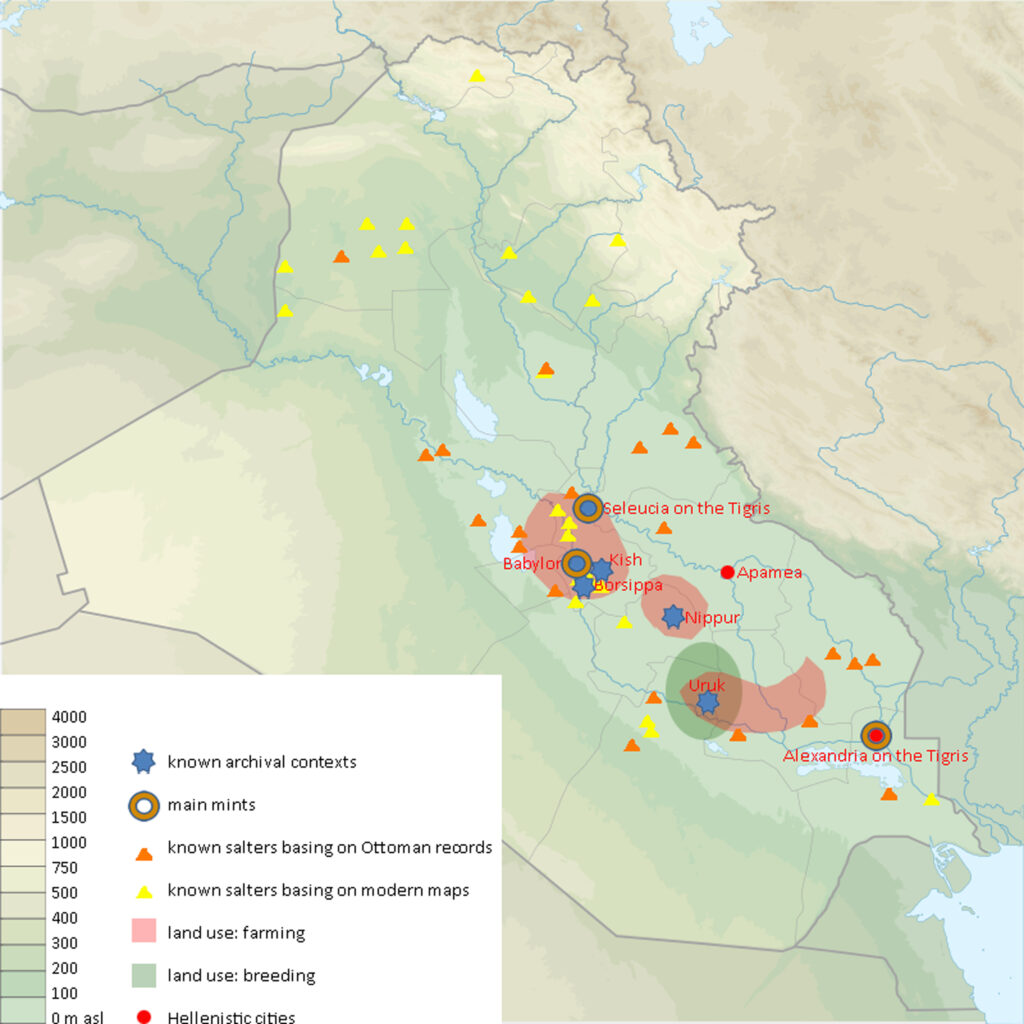
Map of present-day Iraq showing the location of known salterns, along with known archival contexts and main mints of the Seleucid period, main cities, and land use
Urban societies in Mesopotamia seem to have been engaged with salt management for millennia, especially in periods of increased connectivity such as the Hellenistic period (late 4th – 1st centuries BCE. The use of salt in Mesopotamia for different purposes is attested in cuneiform records dating at least from the Early Dynastic period (ca. 2900 – 2350 BCE). However, information on salt use and trade can be likewise acquired from records dating to the Hellenistic period. In Seleucid Babylonia, the salt trade was so important that a tax system managed by the political apparatus was devised to extract continuing revenue.
Reconstructing the administration procedures and policymaking of Babylonian élites in the centuries before the turn of the Christian era is complex. But Seleucid Babylonia played a pivotal role in the trade of salt thanks to its centrality in the trade networks that characterized the Hellenistic world. The main source of information on the salt trade and traders is that of archival contexts. Seleucid archives have been found in several centres of Babylonia, but those of Seleucia on the Tigris and Uruk stand out, particularly for their importance in understanding the salt trade.
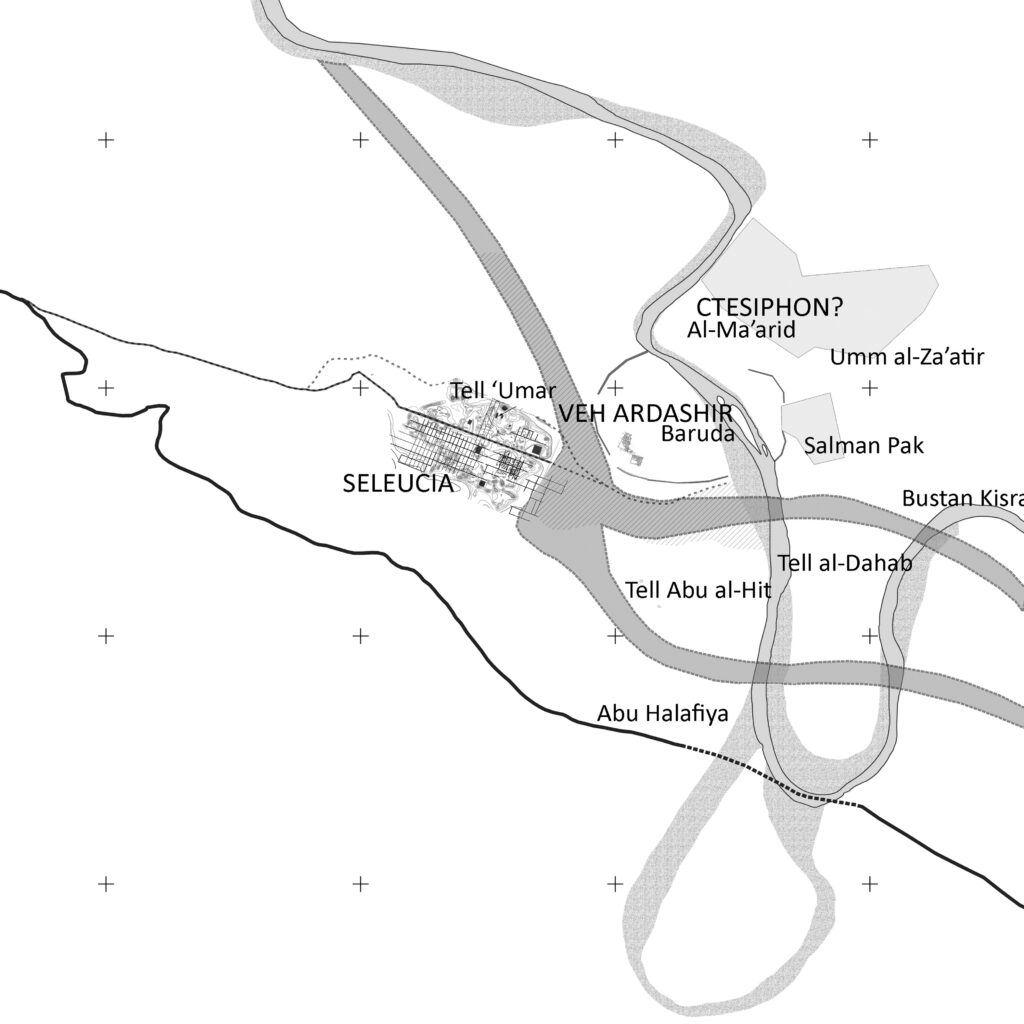
Central Mesopotamia. Location of ancient capitals, ancient water routes and paleo river system along the Nahr Malkha. Map by the author based on survey of the Italian expedition at Seleucia on the Tigris.
The location of ancient Mesopotamian salterns is a matter of speculation but they probably corresponded to those known in modern times. The salinity of the Euphrates and Tigris Rivers increases as they approach the Shatt al Arab. This influences the salinity of groundwater, which when used for irrigation allows salts to evaporate, forming a crust on the landscape. The available data suggests that most of the known salterns and main centres of Babylonia are located where the water table is closer to the surface, an area that forms oval ring-shaped clusters of economic activities that includes farming and breeding.
In Babylonian archives both cuneiform clay tablets and perishable documents (for the most written on parchment, seldom on papyrus) could be kept. These documents are mostly related to a tax on the salt trade. To date there is no evidence to believe that the salt trade tax-system was recorded on clay tablets. Instead, perishable documents were widely used for these kinds of records, as thousands of clay sealings, impressed with the identifying symbols of their writers, clearly reveal.
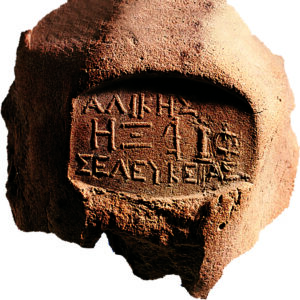
Seleucia on the Tigris. City archive. Clay sealing bearing the stamp of the salt-tax department (© archive of the CRAST)
At Seleucia more than 30,000 seal impressions left by ca. 6,200 seals on more than 25,000 sealings have been identified. The great majority of the seal impressions belonged to official stamps of a Seleucid department dealing with salt taxation, the alikè onè. The latter bear Greek inscriptions that inform us about the payment of, or exemption from, a tax on the salt trade, and express the year of taxation following the Seleucid era almost all dated sealings (c. 97%) fall in the period from Antiochus III’s to Demetrius II’s reigns.
Salt was traded, along with a number of other goods, via supra-regional routes that functioned more and more effectively from the Achaemenid period (ca. 539 – 336 BCE) onwards. These networks were based on overland, water, and maritime routes which allowed long-range connections thanks to a well-organized system under the control of institutions connected with central powers. Overland routes were allowed the movement of people and goods, and in some cases, they were the only possible choice, for example over mountains and plateaus. However, overland routes appear to have functioned less effectively over long distances than water routes as far as speed and load capacity were concerned.
Indeed, it has been put suggested that due to necessity to feed pack animals and to maintain many post-houses or stopping places while traveling, an overland route network could be managed only with huge efforts. As one of the most recent and influential attempts to reconstruct a caravan system basing on historical accounts crossed with other types of information seems to show, a rigid organization with tight schedules for the length and duration of itineraries was also required.

Seleucia on the Tigris. City archive. Saddle sealing showing the stamp of the salt tax department and the seal impressions of witnesses.
Instead, water routes offered the possibility to speed connections and increase the load to be carried remarkably, thanks to river ships of different type and size. Even small ships of limited capacity played a role. Babylonia was at the centre of a system of water routes that fostered connectedness with the Mediterranean, the Gulf, and the Iranian plateau. Canals excavated with the purpose of facilitating irrigation, but also and foremost to be sailed, crossed the whole region to join the Tigris to the Euphrates. Such canals allowed ships to reach the two rivers easily and use them as ways to move along the main trajectories of the country. This was the case of the Nahr Malkha, the royal canal known in Babylonian records.
The fact that the salt trade was one of the most important, if not the most important, economic activity of a city like Seleucia is shown by the overwhelming number of salt-tax stamps on sealings. That this salt-tax system, of which little is known, was managed by the state using a decentralized model (supposedly based on city-offices and officers) seems demonstrated by the fact that Greek inscriptions on seals declare the name or ethnos of the city in which tax-departments were located.

Seleucia on the Tigris. City archive. Clay bulla shaped as a napkin ring.
The way salt tax was managed by the Seleucid administration over the years remains difficult to define, but it seems that great families (or guilds?) of traders played a pivotal role. The comparative study of seals used by traders and other professionals involved in administrative praxis, such as witnesses, reveals the use of shared visual vocabulary. These seals, which were used to represent parties in contracts, contain a fantastic array of Greek symbols, such as gods, and Persian images, such as anchors and griffins, as well as Mesopotamian ones, including monsters. These professionals emerge as one of the most important components of the city society. Their social importance is revealed by the overwhelming presence of documents related to their trade activities in the most important city archive of the Hellenistic world so far discovered: that found at Seleucia.
The emergence of such traders was fostered by the wide possibility to access salt as a natural source as well as by the existence of a communication system that become probably the most important infrastructure of Hellenistic states, and of the Seleucid empire in particular. This communication system allowed short-, middle- and long-range trades to be more and more implemented via centres like Seleucia.
Vito Messina is Professor of the Archaeology of Ancient Asia at the University of Torino. His article, “Salt Traders of Seleucid Babylonia”, recently appeared in the journal Mesopotamia.
How to cite this article
Messina, V. 2023. “The Salt Traders of Seleucid Babylonia.” The Ancient Near East Today 11.1. Accessed at: https://anetoday.org/messina-salt-traders-seleucid-babylonia/.
Want to learn more?
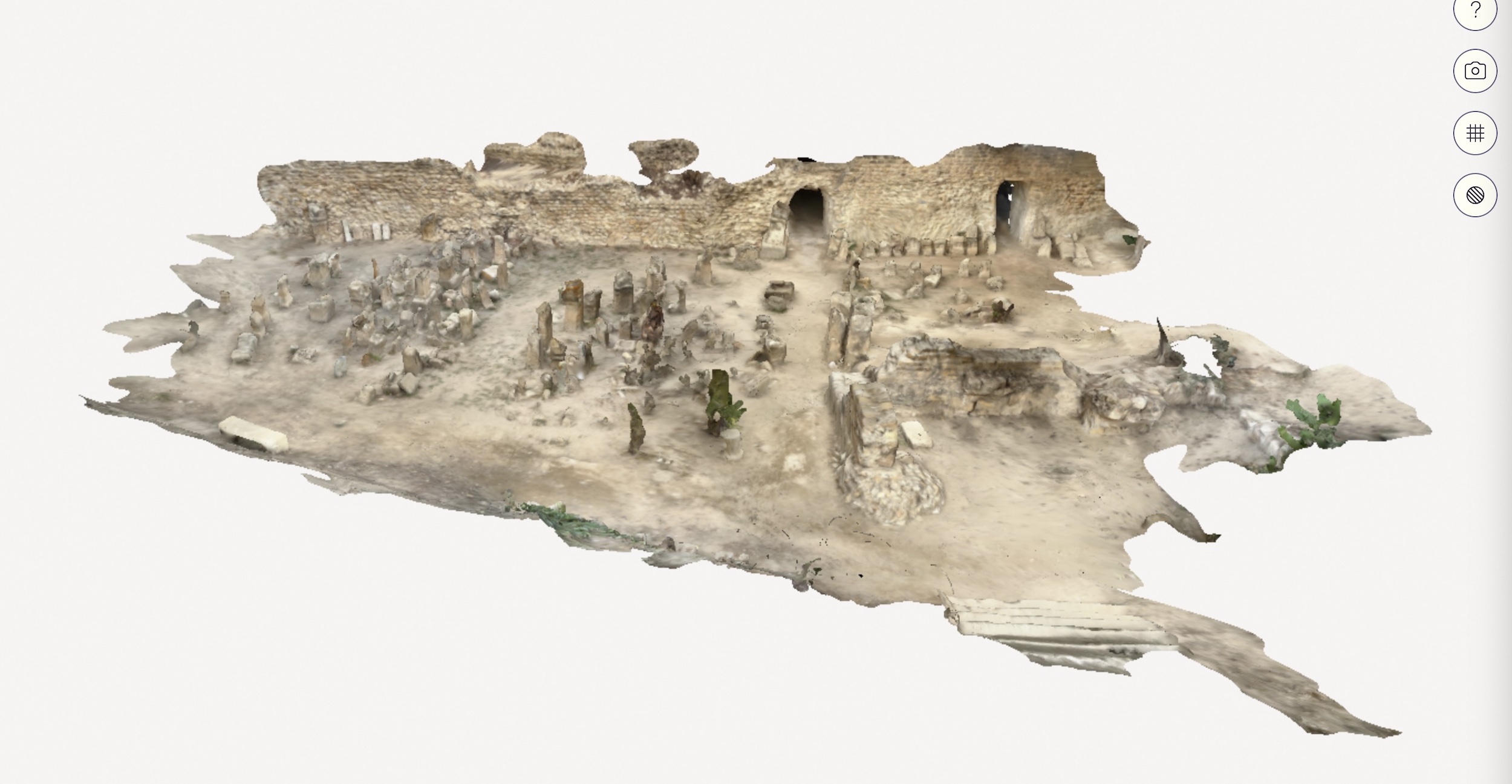
Putting Carthaginian Stelae Back Into Context: The ASOR Punic Project Digital Initiative

Cyprus and Ugarit: A Tale of Two Late Bronze Age Mercantile Polities
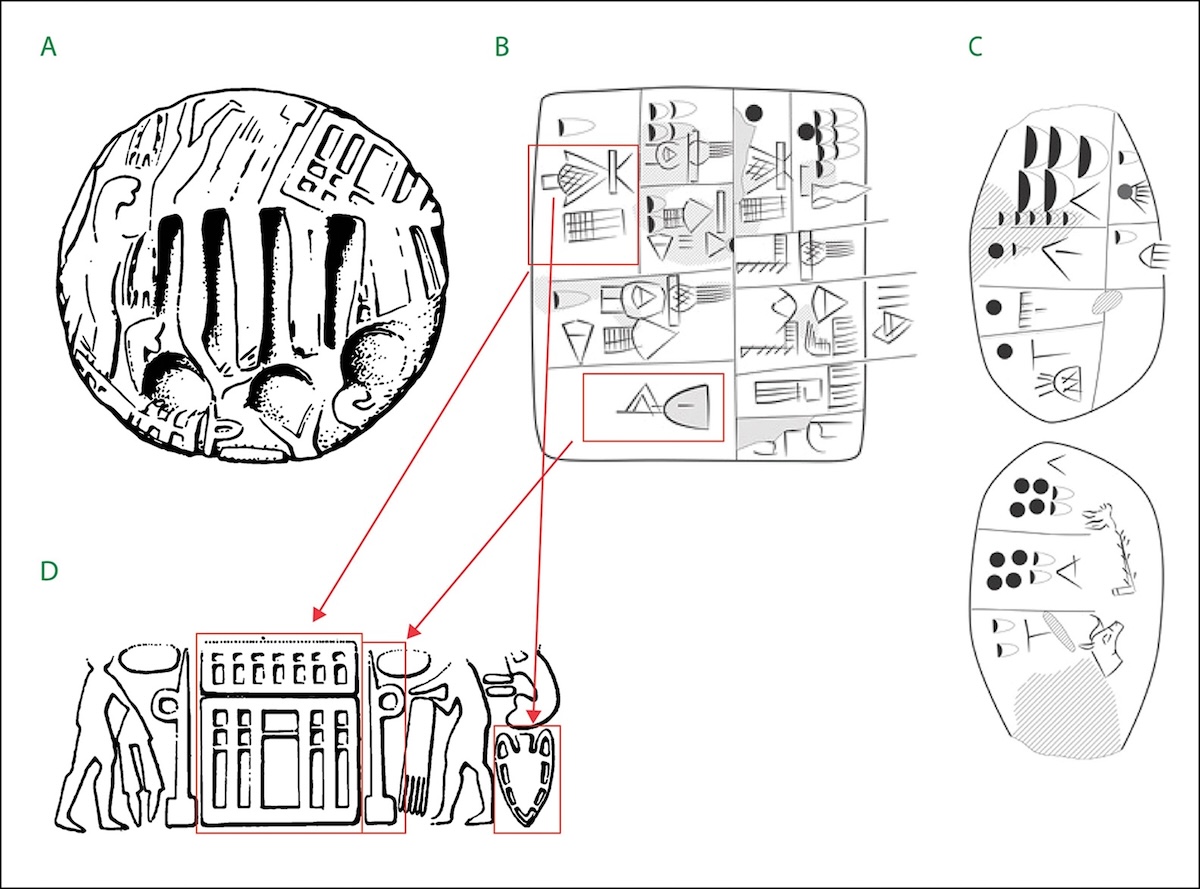
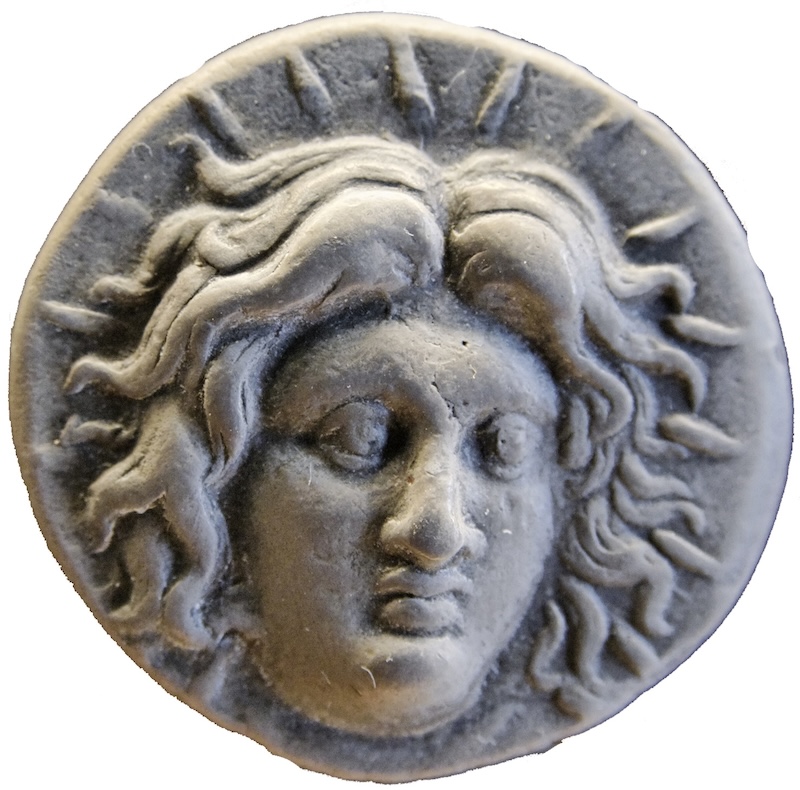

Post a comment